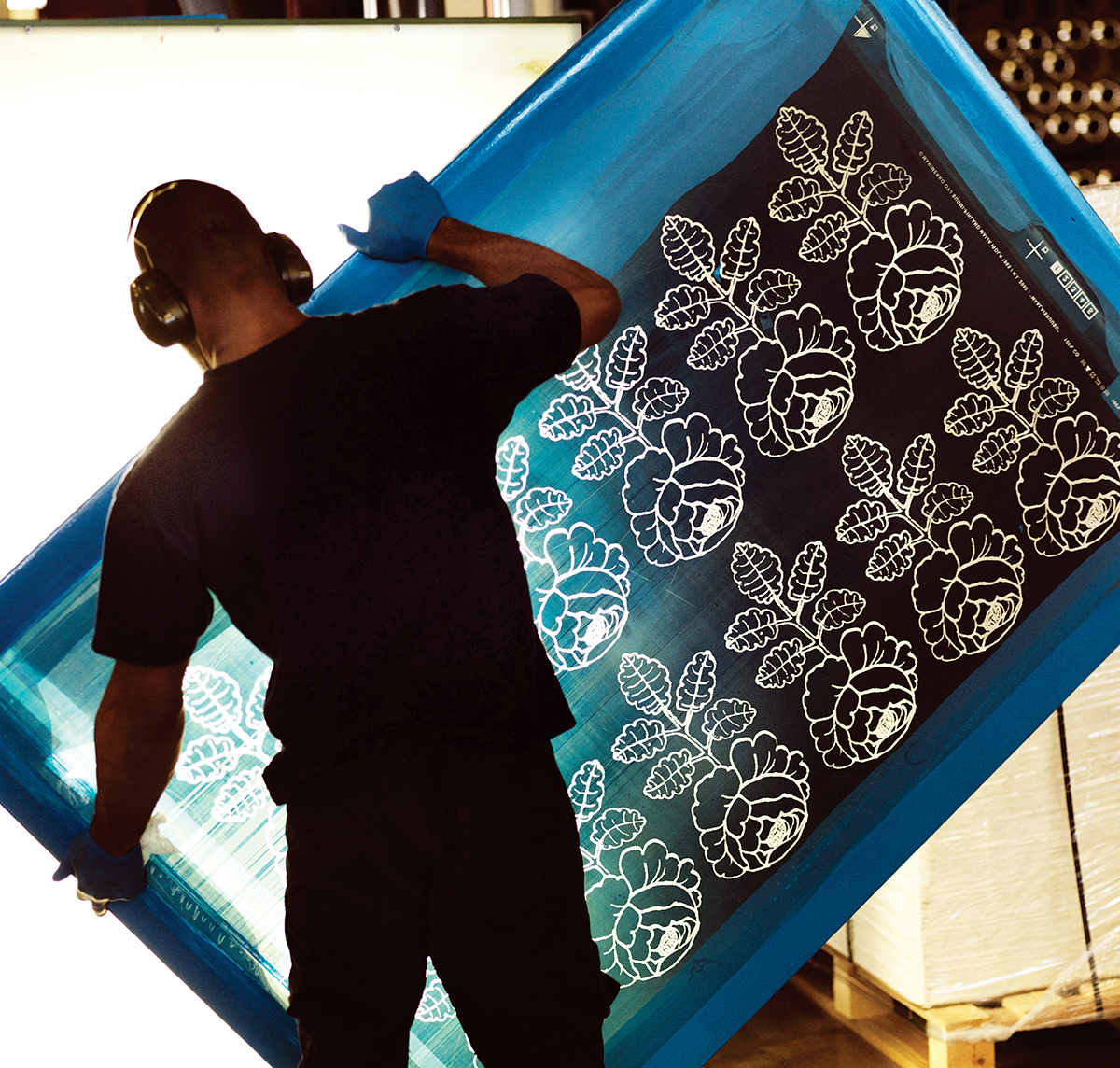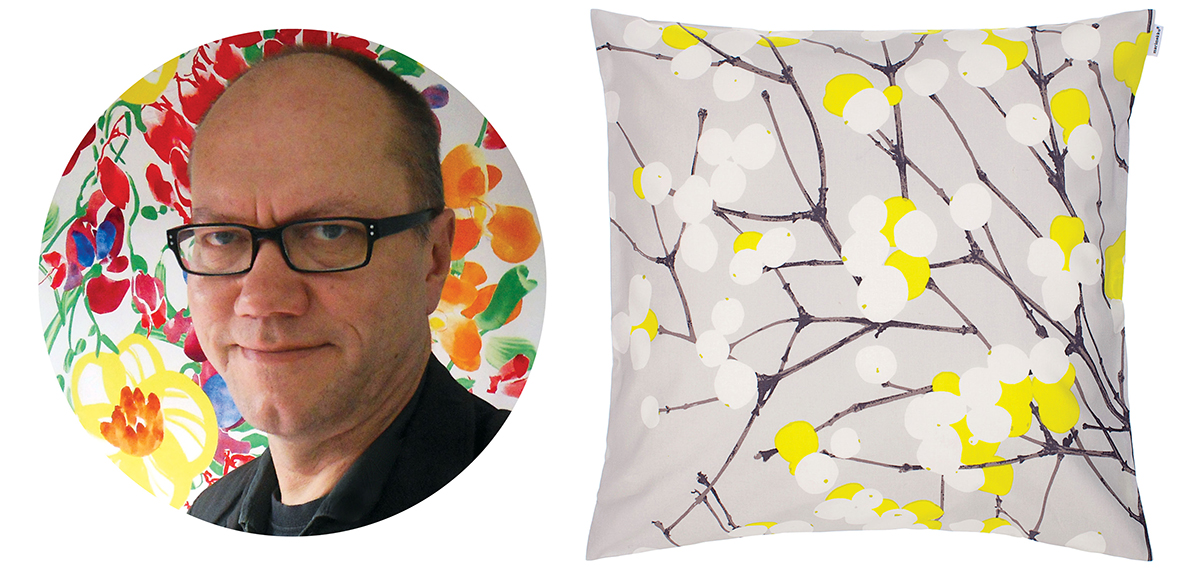Pattern Recognition with Petri Juslin

A Marimekko print in progress. / Courtesy Photo
In 1951, Finnish entrepreneur Armi Ratia created Marimekko, the internationally renowned textile company that first turned heads in America when Jacqueline Kennedy started sporting its bright, bold prints. But before it became a Camelot staple, it debuted at Harvard Square’s Design Research, which served as the exclusive U.S. dealer of Marimekko wares from 1959 to 1976. Today, those eye-catching patterns endure—right down to their playfully askew aesthetic, a holdover from the hand-screened-printing days. While modern digital methods can produce more-accurate prints, this throwback look is part of the charm, according to artwork studio manager Petri Juslin: “The tradition is so strong in the designers’ minds when they think of Marimekko,” he says. While visiting Marimekko’s Newbury Street location for Design Week 2016, Juslin filled us in on the creation of the company’s iconic prints.
How did you end up with a career in design?
Print design was very popular in Finnish homes. I always wanted to find out how they were made. It’s a wonderful way to bring art into every level of society. It’s very affordable, but still beautiful and functional.
How would you describe the Marimekko aesthetic?
Armi Ratia said, “I can’t define it, but when I see a design, I can tell if it’s Marimekko or not.” So it’s something unexplainable. But the prints are a little bit surprising and mysterious. It’s something that makes you think.

Left: Artwork studio manager Petri Juslin. Right: The “Lumimarja” pattern graces pillows, tablecloths, and more. / Courtesy Photos
Do you have a favorite print?
Perhaps “Lumimarja.” It was very interesting because we used very special methods in making the original.
What was that process like?
The designer, Erja Hirvi, wanted to make a tree with berries. She saw some bushes when she was driving, and she stopped the car in traffic and took some twigs. She tried to reconstruct the tree with a computer, but threw the twigs away. She complained to me that it was too difficult. I said, “Let’s see if they are still in the trash—maybe we can save it.” I advised her to put the twigs on cardboard and tape them down. And then we scanned that. We made this all in a couple of hours one night late in the office. It’s been 12 years, and we’ve printed this in dozens of colorways. It’s very popular.


